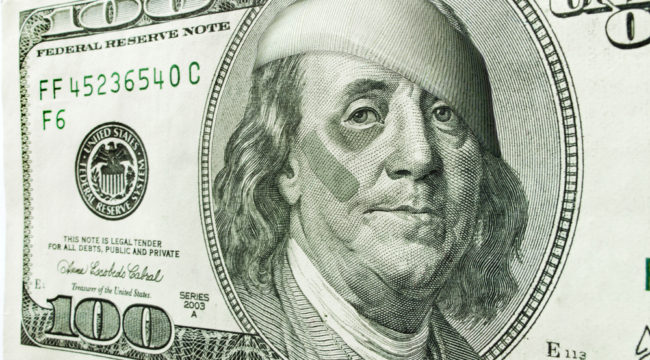The 4-Front Assault on the Dollar
The response to U.S. efforts to cheapen the dollar in 2010–2011 was not long in coming. It came from four directions — the IMF, Russia, China and Saudi Arabia. Enter the new world money: the SDR.
Less than a year after Obama’s declaration of a new currency war, the IMF released a paper that is a blueprint for implementation of a new global reserve currency called the special drawing right (SDR), or world money.
On Dec. 1, 2015, the IMF announced that the Chinese yuan would be included in the basket of currencies used to determine the value of one SDR. With China onboard, the SDR is poised to become the de facto global reserve currency.
China’s and Russia’s immediate response to the coming dollar collapse and rise of the SDR is to buy gold. (It’s not yet possible to diversify heavily into SDR-denominated assets, because there are very few SDR assets available.) Russia has acquired over 1,000 tonnes of gold in the past seven years, and China has acquired over 3,000 tonnes of gold in the same time.
Combined, Russian and Chinese gold purchases are over 10% of all the official gold in the world. China has also acquired billions of SDRs in secret secondary market transactions brokered by the IMF.
Saudi Arabia’s response has been more subtle but may be more dramatic in the end. Relations between Saudi Arabia and the U.S. have deteriorated sharply over the course of the Obama administration. The primary cause was the Iran-U.S. nuclear negotiations and what amounts to the U.S. recognizing Iran as the leading regional power.
In the past months, the U.S. ended the secrecy surrounding Saudi ownership of U.S. Treasury securities (in place since 1975). The U.S. also released a formerly top-secret 28-page section of the 9/11 Commission Report that clearly reveals links between members of the Saudi royal family and the 9/11 hijackers and al-Qaida.
The Saudis have threatened to dump their U.S. Treasury securities in response to the release of the secret report, but so far that threat has not materialized.
Saudi Arabia is dealing from a position of weakness in relation to the U.S. Saudi Arabia is now running a fiscal deficit rather than a surplus, so the issue of where to invest reserves is moot. In fact, Saudi Arabia has been selling its reserves, mainly U.S. Treasuries, to cover its fiscal deficit.
The U.S. is no longer dependent on Saudi Arabia for energy supplies. It has become a net exporter of energy and has the largest oil reserves in the world. All of the conditions that gave rise to the petrodollar now stand in the exact opposite position of where they were in 1975.
Neither the U.S. nor Saudi Arabia has much leverage over the other, in contrast to 1975, when each side held powerful trump cards.
This does not mean that oil will be priced in a currency other than dollars tomorrow. It does mean that a new pricing mechanism is possible, and no one should be surprised if it happens.
Saudi Arabia could easily price oil in yuan and then swap the yuan for Swiss francs or SDRs and use the proceeds to add to its reserves or buy gold. Saudi Arabia could also price oil in SDRs or gold and hold those assets or swap them for other hard currencies to diversify away from dollars.
The possibilities are numerous. The conversion of oil prices away from dollars to some alternative is just a matter of time.
All of these trends — IMF support for SDRs, Russian and Chinese support for gold and Saudi Arabia’s search for a new benchmark for oil — came to a head last month in Hangzhou, China, at the G-20 Leaders’ Summit, almost seven years to the day after the Pittsburgh G-20 Summit that spawned the new currency war. China’s President Xi is the president of the G-20 for 2016 and has made strides on the world stage as an equal partner with the U.S. in the management of the international monetary system.
Now, just four weeks following the G-20 Summit, the yuan has officially joined the SDR. The yuan will make up over 10% of the SDR. From there, new issuance of world money (SDRs) will be supported by China because every time the IMF issues new SDRs, they will be expanding the role of the Chinese yuan as a reserve currency.
Gold, yuan and SDRs all have one thing in common — they are alternatives to the dollar. As momentum toward these alternatives grows, the role of dollars as a reserve currency could diminish quite quickly — like sterling’s role between 1914–1944.
The result for dollar holders will be exactly the same as the result for sterling holders: inflation and lost wealth. New political and financial arrangements, and new forms of energy, will no doubt emerge over time.
The key to wealth preservation is to move out of the declining form of money — dollars — and into the rising forms of money — gold and SDRs — sooner, rather than later.
Regards,
Jim Rickards
for The Daily Reckoning
Ed. note: “A charmingly mordant take on the stock news of the day, accentuated by philosophical maunderings…” That’s how one leading financial magazine described the free daily email edition of The Daily Reckoning. You’ll find cutting-edge analysis from the complex worlds of finance, politics and culture. Presented in an entertaining style few can match. Click here now to sign up for FREE.



Comments: